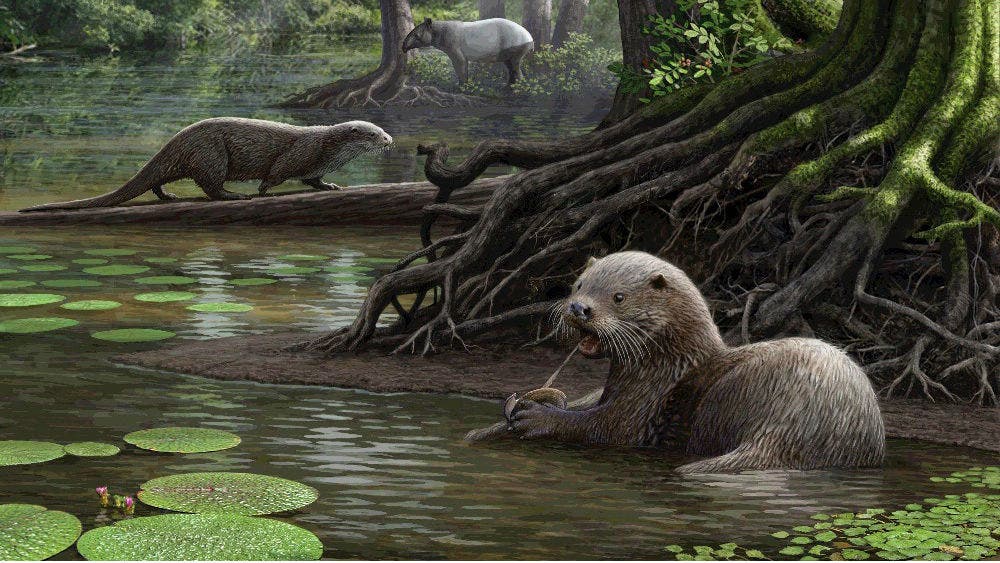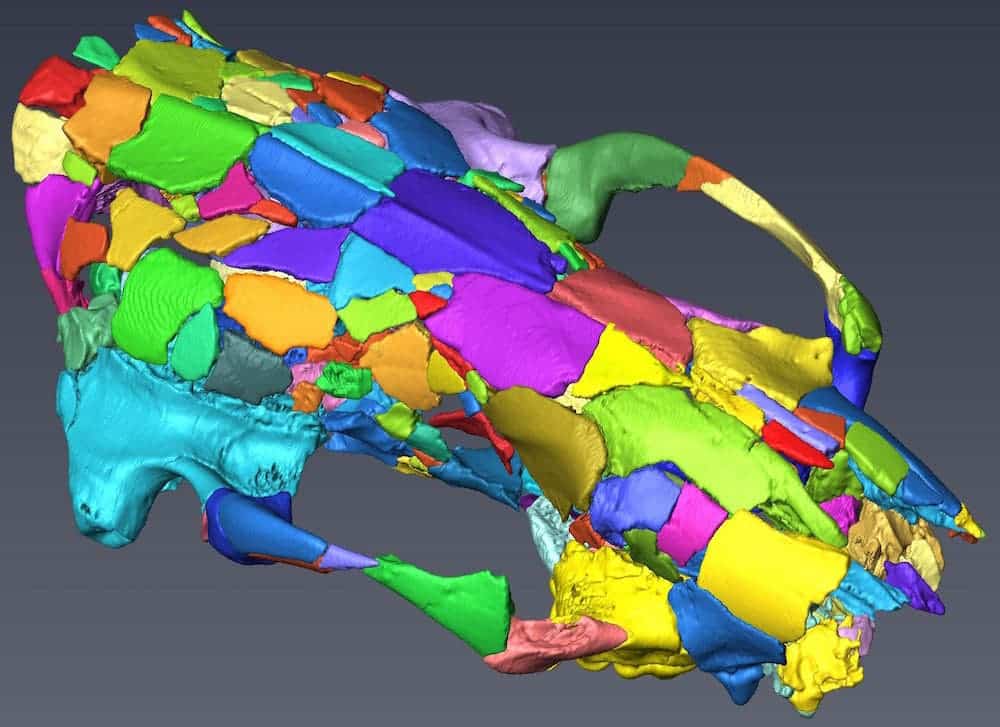It was adorable, but also terrifying. At110 lbs. (50 kilograms), it roamed the shallow, swampy waters of ancient China, likely spending its days swimming and looking for shellfish. But did it also hunt other things?

It’s the largest of all otters we’ve ever found.
“This extinct otter is larger than all living otters,” said study lead researcher Xiaoming Wang, a curator of vertebrate paleontology at the Natural History Museum of Los Angeles County in California.
The first fossil was discovered in 2010 but as it so often happens, it was too fragile for a serious reconstruction. It was also flattened, which brings extra problems. But the remains — which included an 8 inch (21 cm) skull and teeth — did give solid indications about the animal’s stature and lifestyle, hinting that they were on to something special. For instance, scientists found that the molars had actually evolved at least four separate times among other otter species, indicating that this species doesn’t share a common ancestor with other otters – it evolved on its own.
“The skull was unlike [that of] any other animals found so far, and that’s when we realized that this is something unique and important,” Wang told Live Science.
Still, reconstruction was not possible, so they had to attempt something else, something even more interesting: a virtual reconstruction.
“The bones are pretty fragile, so we couldn’t really reconstruct it physically,” Denise Su, the head of paleobotany and paleoecology at the Cleveland Museum of Natural History, told NPR. “So what we did is we took CT scans of the cranium, and then we digitally reconstructed it.”
It’s kind of like a 3D jigsaw puzzle done on a computer. You take the fossils you have and see how they might fit together; then, you start to think about what could fill in the holes.

Image credits: Stuart C. White
While their virtual reconstruction does provide some answers, the study raises even more questions — particularly, why was the otter so big? Does its size reflect the size of its prey, or is there some other reason why it evolve to become so big? Usually, when carnivores grow so large, it’s because they want to eat other large animals, but the otter’s skull seems to indicate that it ate mollusks, so there would be no need for such a huge size. The reason for this might be that unlike modern otters, this ancient one wasn’t so smart.
Modern otters also like to crack mollusks, but they use tools to do so (sticks and stones). If the ancient species hadn’t figured out how to do so, then maybe it relied only on its raw strength and therefore needed to grow a big, strong skull.
The team also wants to figure out how the otter got on, both on land and in water and what its environment was generally like.
“We are working to answer questions regarding its paleobiology, like, ‘How did it swim? How did it move on the ground? Why is it so large?'”
Journal Reference: Xiaoming Wang, Camille Grohé, Denise F. Su, Stuart C. White, Xueping Ji, Jay Kelley, Nina G. Jablonski, Tao Deng, Youshan You & Xin Yang. A new otter of giant size, Siamogale melilutra sp. nov. (Lutrinae: Mustelidae: Carnivora), from the latest Miocene Shuitangba site in north-eastern Yunnan, south-western China, and a total-evidence phylogeny of lutrines. http://dx.doi.org/10.1080/14772019.2016.1267666


